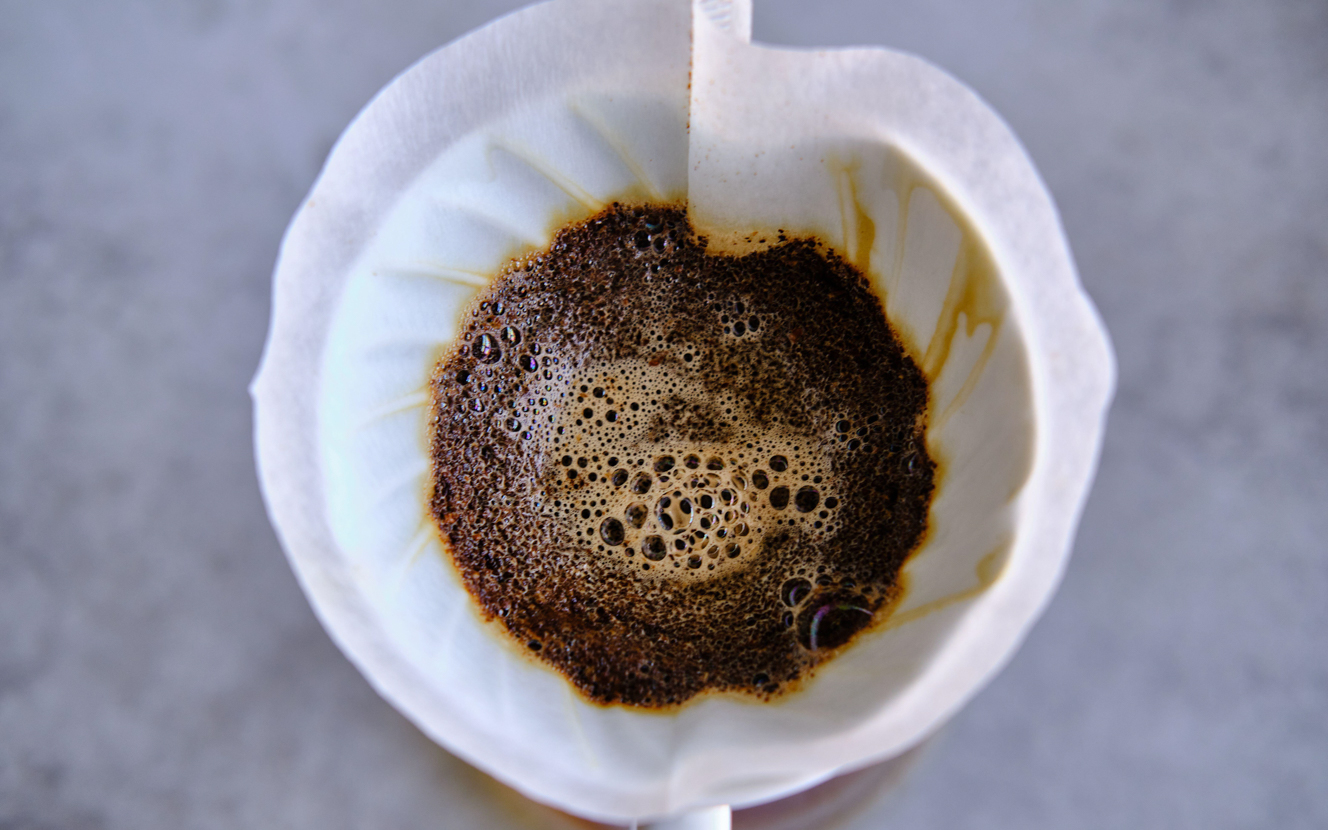
New research finds compounds which cause fruit flavours in fermented coffee – what could this mean?
For some years now, experimental processing techniques have been a hot topic in the specialty coffee sector. These processing methods tend to result in more complex and unique sensory profiles, which also have more fruity flavours. In turn, they are becoming more and more popular among coffee professionals and enthusiasts alike.
Fermentation in processing plays a key role to create these fruitier flavours. However, up until recently, little was known about how this happens.
Last month, Zurich University of Applied Sciences’ (ZHAW) Coffee Excellence Centre presented its study on fermented coffee flavours at the American Chemical Society Spring 2023 meeting. As part of its findings, ZHAW identified three chemical compounds which directly contribute to fruity flavours and aromas in fermented coffee.
Naturally, this raises a lot of questions. But one of the more prominent is how might this research influence coffee processing methods in the coming years?
WHY DOES FERMENTATION MAKE COFFEE TASTE MORE FRUITY?
As the specialty coffee market has grown and diversified over the past few years, so have processing methods, too. Recently, more and more farmers have started using controlled fermentation to enhance coffee quality and flavour.
Generally speaking, this is done in two main ways. These are anaerobic or aerobic fermentation (which are different due to the absence or presence of oxygen). The removal of or presence of oxygen triggers several chemical reactions which create various acids and alcohols.
As a result, the sugars in the fruit of the coffee will break down over a prolonged period of time. This means the coffee will taste much sweeter and more complex, with more fruity and “winey” aromas and flavours.
We know that using particular yeasts and strains of bacteria during coffee fermentation can create specific sensory profiles. However, so far, there has been a somewhat limited understanding of which particular chemical compounds are responsible for creating certain flavours and aromas.
Looking at different processing methods
In its recent research, ZHAW outlined how it identified three distinct chemical compounds which create “the intense fruity flavour and the raspberry scent of a fermented coffee”.
Sasa Sestic is the founder and CEO of Project Origin in Australia, which helped to fund the research project. He also provided the coffee for the study: a green tip Gesha from Iris Estate in Panama, which Sasa co-owns with Jamison Savage.
“If we can understand how volatile compounds are formed at farm level, then we can understand how to highlight them through processing methods,” he says. “We unlock the potential to emphasise terroir with the support of science.”
A team led by Dr. Chahan Yeretzian, Head of the Coffee Excellence Centre, and Dr. Samo Smrke, Head of Coffee Transformation at the Coffee Excellence Centre, sorted the coffee into three different categories. These were according to processing method:
Washed processing (producers remove all flesh and mucilage from the beans before drying)
Pulped natural carbonic maceration processing (producers remove skin of the fruit while pulp is left intact)
Natural carbonic maceration
Similar to processes used in wine making, carbonic maceration has become more prominent in specialty coffee. For example, Sasa used a carbonic macerated Sudan Rume variety in his winning 2015 World Barista Championship routine.
The process involves placing cherries in sealed tanks and flushing them with carbon dioxide to remove any residual oxygen. Like other fermentation processing methods, carbonic maceration often results in more bright, wine-like, and fruity flavours.
Analysing different coffees
As part of the study, each coffee was brewed the same way. In order to analyse the aroma of all samples, ZHAW used a process known as gas chromatography-olfactometry (GC-O).
This is when scientists uses a gas chromatograph to separate individual components of a mixture or substance. They then pass through a mass spectrometer to identify each individual component.
Following this, human assessors were then asked to describe any aromas they could pick up on.
Chahan and Samo explain why this type of analysis was also used in conjunction with gas chromatography.
“We saw descriptors, such as ‘extremely sweet’, ‘crazy like strawberry’, and ‘artificially sweet’,” they say. “All the panellists were able to point out this characteristic in the carbonic macerated coffee.
“However, when examining the mass spectrometry data of the same coffee, at the exact same time and position in the chromatogram as panellists detected this unique and strong aroma, we were not able to detect compounds that could be attributed to those flavours,” they add.
“This confirms what flavour scientists have known since long: our nose outperforms even the best instrument on some of these low-threshold aro
ma active compounds that are so important to our understanding of the flavours we perceive,” Chahan and Samo continue.
COULD RESEARCH INFLUENCE MORE PRODUCERS TO STANDARDISE PROCESSING TECHNIQUES?
The results of ZHAW’s study concluded that six chemical compounds are responsible for fruity aromas and flavours in fermented coffee. However, the researchers stated that they were only able to identify three of them:
2-methylpropanal
3-methylbutanal
Ethyl 3-methylbutanoate
“One very intense fruity smelling compound, ethyl 3-methylbutanoate, stood out in the natural carbonic macerated coffee,” Chahan and Samo say. “It was found to be 125-times more abundant than in the washed coffee.”
It’s important to note scientists involved in the study emphasise that further research is necessary to identify the other three compounds. Moreover, we also need to know how these compounds are formed in the first place.
Farmers have been using particular yeasts, bacteria, and microorganisms during processing to control and enhance coffee flavour for some time now. But at the same time, this is clear evidence that specific chemical compounds result in the more characteristic fruity flavours we associate with experimentally processed coffees.
Ultimately, this leads us to several important questions. Arguably, however, the most important is if we know which compounds cause certain flavours, what does this mean for farmers?
Could producers develop and use more standardised processing methods? And would this be especially apparent with processing methods that result in more targeted and specific flavour profiles?
A question of value addition
Once producers know which specific compounds cause certain flavours, they can potentially process coffee with more intent and control. In turn, they can target particular sensory profiles. Eventually, this could lead to producing experimentally processed coffee on a larger scale – potentially allowing producers to add more value to their coffee.
“We first need to know how much potential a coffee has in the first place, in terms of flavour profile and volatile compounds,” Sasa says. “Then, through processing, we can determine how the amount of more desirable volatile compounds can be increased, so we can experience new flavours and aromas.”
Chahan and Samo agree, saying: “The practical implication of our study is that it provides farmers with new ways to improve the quality and quantity of fruity notes through post-harvest processing.
“This may eventually also help producers in a fast-growing market of fermented coffee to take more informed positions, as allegations on coffees ‘infused’ with fruit are surfacing,” they add.
The other side of the coin
However, with this in mind, we also need to acknowledge that not all coffee farmers have the ability to try fermentation and other experimental processing methods. These processing techniques often require significant upfront investment and specialist equipment which some producers may not have access to.
Moreover, for many smallholder farmers, the risks of such experimental processing methods may outweigh the benefits. Although these coffees can sometimes result in higher prices, they are typically more expensive to produce than more “traditional” processed coffees.
Similarly, without proper quality control protocols in place, producers may end up creating less desirable sensory profiles of fermented coffee – such as sour, overly fermented, or rancid flavours.
Although experimentally processed coffees are certainly becoming more popular, they only represent a fraction of the wider coffee market.
However, that’s not to say that research like this doesn’t benefit farmers who produce these kinds of coffees. In fact, with further studies conducted in the future, it could be possible to create more “accessible” experimental processing methods – just as long as farmers have access to the right infrastructure and support.



